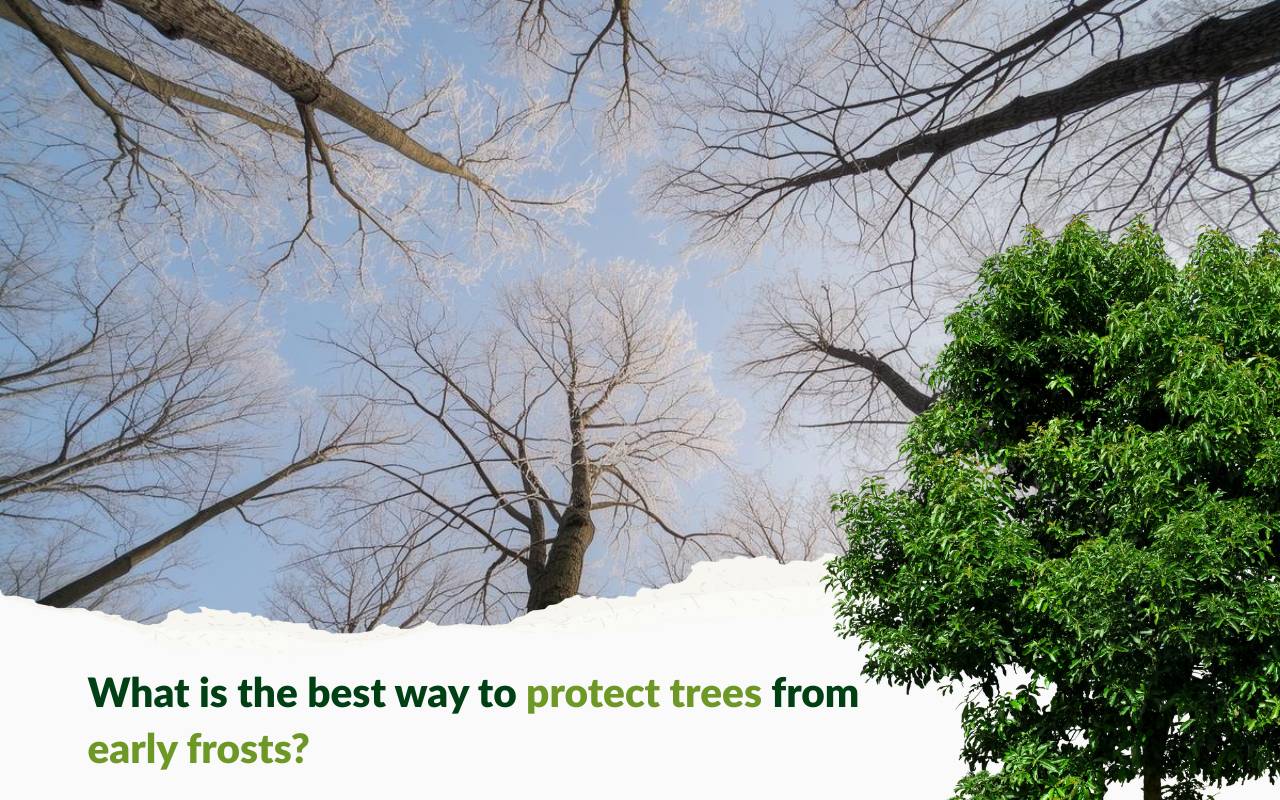
Early frosts can shock young trees, crack bark, and kill tender buds overnight. This guide explains practical, homeowner-friendly tactics to prevent damage before temperatures plunge. You’ll learn coverings that work, how to warm soil, when to water, and ways to block wind. Use these steps to protect trees now and ensure vigorous growth next spring after unpredictable autumn cold snaps.
What is the best way to protect trees from early frosts?
The best way is a layered plan: cover canopies with breathable fabric, insulate trunks, mulch for root warmth, add windbreaks, and water soil before cold nights. Monitor forecasts and react fast. These combined actions define How to Protect Trees from Early Frosts effectively for both young and mature trees.
Understanding the Impact of Early Frosts on Trees
When temperatures dip quickly, water inside leaves and cells freezes, forming ice crystals that rupture tissues. Buds and blossoms are highly vulnerable. Recognize warning signs—blackened leaves, wilted shoots, slowed growth—and respond early. A season-long plan for How to Protect Trees from Early Frosts starts with knowing the risks and timing protective measures before damage spreads.
Choosing the Right Tree Coverings for Protection
Use burlap, frost cloths, or lightweight blankets to trap radiated heat while allowing airflow. Avoid plastic that traps moisture against tissues. Place covers before sunset, secure edges, and remove after temperatures rise above freezing. Proper covers are essential in How to Protect Trees from Early Frosts and prevent wind chill from biting buds.
Implementing Windbreaks to Shield Trees
Porous windbreaks—evergreen hedges or slatted fences—reduce wind speed without creating turbulence. Position barriers on the windward side, roughly two to four times the tree’s height away. Limiting drafts supports How to Protect Trees from Early Frosts by keeping the boundary layer of air around canopies slightly warmer.
Insulating Tree Trunks from Extreme Cold
Wrap trunks with tree wrap tape or burlap from the base to the first branches to reduce frost cracks and sunscald. Keep wraps snug, not tight, and remove in early spring. Inspect bark for splits or discoloration to maintain long-term vigor.
Optimizing Soil Warmth for Tree Health
Apply two to four inches of organic mulch out to the drip line to stabilize soil temperature and protect roots. Deeply water the afternoon before a predicted frost; moist soil stores and releases heat overnight. This simple pairing is central to How to Protect Trees from Early Frosts at the root zone.
Utilizing Heat Sources in the Garden
Use outdoor-safe string lights or low-wattage heat lamps to add a few degrees near vulnerable buds. Choose weather-resistant, low-heat bulbs and safe placement. Turn on at dusk and off after temperatures exceed freezing.
Monitoring and Reacting to Weather Changes
Set frost alerts and keep supplies—covers, stakes, lights—ready. Before sunset: water, cover, and activate gentle heat. At first light: remove covers if temperatures exceed 40°F and inspect for damage. A prepared checklist streamlines How to Protect Trees from Early Frosts when time is short.
Pruning Trees to Minimize Frost Damage
Lightly remove dead or weak wood in late summer to reduce frost-prone zones and improve airflow. Make clean cuts at the branch collar and avoid major fall pruning, which invites injury during cold snaps.
Protecting Young Trees with Extra Care
Saplings need combined defenses: trunk wraps, generous mulch, and full-canopy frost cloth secured at ground level. Consider tubular tree shelters to create a mild microclimate. Check regularly to prevent restricted growth or moisture issues.

Plan Your Seasonal Care
For year-round guidance, see Tree Maintenance Calendar, Seasonal Pruning Tips, Best Time to Trim Trees, Arborist Advice, and Tree Risk Assessment. For professional help, Contact Perez Landscape.
How-to: Step-by-Step for Frost Nights
- Noon–3 p.m.: Deep-water the root zone to bank soil heat.
- 3–5 p.m.: Lay 2–4 inches of mulch; check wraps on thin-barked trunks.
- Before sunset: Drape breathable covers to the ground and anchor all edges.
- At dusk: Add outdoor-safe string lights on high-value branches if needed.
- Sunrise: Remove covers once air is above freezing; ventilate to prevent mold.
- Mid-morning: Inspect for wilted tips; delay pruning until warm weather returns.
Frequently Asked Questions
When should I cover trees for frost?
Cover just before sunset on nights forecast at 32–36°F. Timely action supports How to Protect Trees from Early Frosts without overheating plants.
What fabric works best for frost protection?
Breathable frost cloth or burlap. Avoid plastic contacting foliage; it traps moisture that freezes.
Does watering before a frost really help?
Yes. Moist soil stores daytime heat and releases it overnight, buffering root temperatures.
How do I protect young trees specifically?
Combine trunk wrap, generous mulch, and a ground-anchored frost cloth or tree shelter to create a warmer microclimate.
Can pruning increase frost resilience?
Light, targeted pruning in late summer removes weak points. Avoid heavy fall cuts that leave fresh, frost-sensitive wounds.
References
- Protecting Plants From Frost: How to Prevent Frost Damage – The Old Farmer’s Almanac.
- How to Protect Plants from Frost: 5 Simple Solutions – Better Homes & Gardens.
